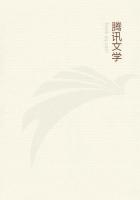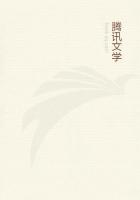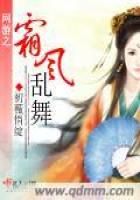And thus in her skiff,a piece of bark tied at both ends with vines,and the edge of it but just above the surface of the water,she pushes out regardless of the elements,if they be but commonly agitated.
While she paddles to the fishing-bank,and while employed there,the child is placed on her shoulders,entwining its little legs around her neck and closely grasping her hair with its hands.To its first cries she remains insensible,as she believes them to arise only from the inconvenience of a situation,to which she knows it must be inured.
But if its plaints continue,and she supposes it to be in want of food,she ceases her fishing and clasps it to her breast.An European spectator is struck with horror and astonishment at their perilous situation,but accidents seldom happen.The management of the canoe alone appears a work of unsurmountable difficulty,its breadth is so inadequate to its length.The Indians,aware of its ticklish formation,practise from infancy to move in it without risk.Use only could reconcile them to the painful position in which they sit in it.They drop in the middle of the canoe upon their knees,and resting the buttocks on the heels,extend the knees to the sides,against which they press strongly,so as to form a poise sufficient to retain the body in its situation,and relieve the weight which would otherwise fall wholly upon the toes.
Either in this position or cautiously moving in the centre of the vessel,the mother tends her child,keeps up her fire (which is laid on a small patch of earth),paddles her boat,broils fish and provides in part the subsistence of the day.Their favourite bait for fish is a cockle.
The husband in the mean time warily moves to some rock,over which he can peep into unruffled water to look for fish.For this purpose he always chooses a weather shore,and the various windings of the numerous creeks and indents always afford one.Silent and watchful,he chews a cockle and spits it into the water.Allured by the bait,the fish appear from beneath the rock.
He prepares his fish-gig,and pointing it downward,moves it gently towards the object,always trying to approach it as near as possible to the fish before the stroke be given.At last he deems himself sufficiently advanced and plunges it at his prey.If he has hit his mark,he continues his efforts and endeavours to transpierce it or so to entangle the barbs in the flesh as to prevent its escape.When he finds it secure he drops the instrument,and the fish,fastened on the prongs,rises to the surface,floated by the buoyancy of the staff.Nothing now remains to be done but to haul it to him,with either a long stick or another fish-gig (for an Indian,if he can help it,never goes into the water on these occasions)to disengage it,and to look out for fresh sport.
But sometimes the fish have either deserted the rocks for deeper water,or are too shy to suffer approach.He then launches his canoe,and leaving the shore behind,watches the rise of prey out of the water,and darts his gig at them to the distance of many yards.Large fish he seldom procures by this method;but among shoals of mullets,which are either pursued by enemies,or leap at objects on the surface,he is often successful.
Baneelon has been seen to kill more than twenty fish by this method in an afternoon.The women sometimes use the gig,and always carry one in each canoe to strike large fish which may be hooked and thereby facilitate the capture.But generally speaking,this instrument is appropriate to the men,who are never seen fishing with the line,and would indeed consider it as a degradation of their pre-eminence.
When prevented by tempestuous weather or any other cause,from fishing,these people suffer severely.They have then no resource but to pick up shellfish,which may happen to cling to the rocks,and be cast on the beach,to hunt particular reptiles and small animals,which are scarce,to dig fern root in the swamps or to gather a few berries,destitute of flavour and nutrition,which the woods afford.To alleviate the sensation of hunger,they tie a ligature tightly around the belly,as I have often seen our soldiers do from the same cause.
Let us,however,suppose them successful in procuring fish.The wife returns to land with her booty,and the husband quitting the rock joins his stock to hers;and they repair either to some neighbouring cavern or to their hut.
This last is composed of pieces of bark,very rudely piled together,in shape as like a soldier's tent as any known image to which I can compare it:
Too low to admit the lord of it to stand upright,but long and wide enough to admit three or four persons to lie under it."Here shelters himself a being,born with all those powers which education expands,and all those sensations which culture refines."With a lighted stick brought from the canoe they now kindle a small fire at the mouth of the hut and prepare to dress their meal.They begin by throwing the fish exactly in the state in which it came from the water,on the fire.When it has become a little warmed they take it off,rub away the scales,and then peal off with their teeth the surface,which they find done and eat.Now,and not before,they gut it;but if the fish be a mullet or any other which has a fatty substance about the intestines,they carefully guard that part and esteem it a delicacy.The cooking is now completed by the remaining part being laid on the fire until it be sufficiently done.
A bird,a lizard,a rat,or any other animal,they treat in the same manner.
The feathers of the one and the fur of the other,they thus get rid of.















